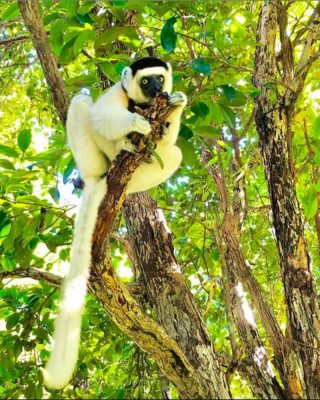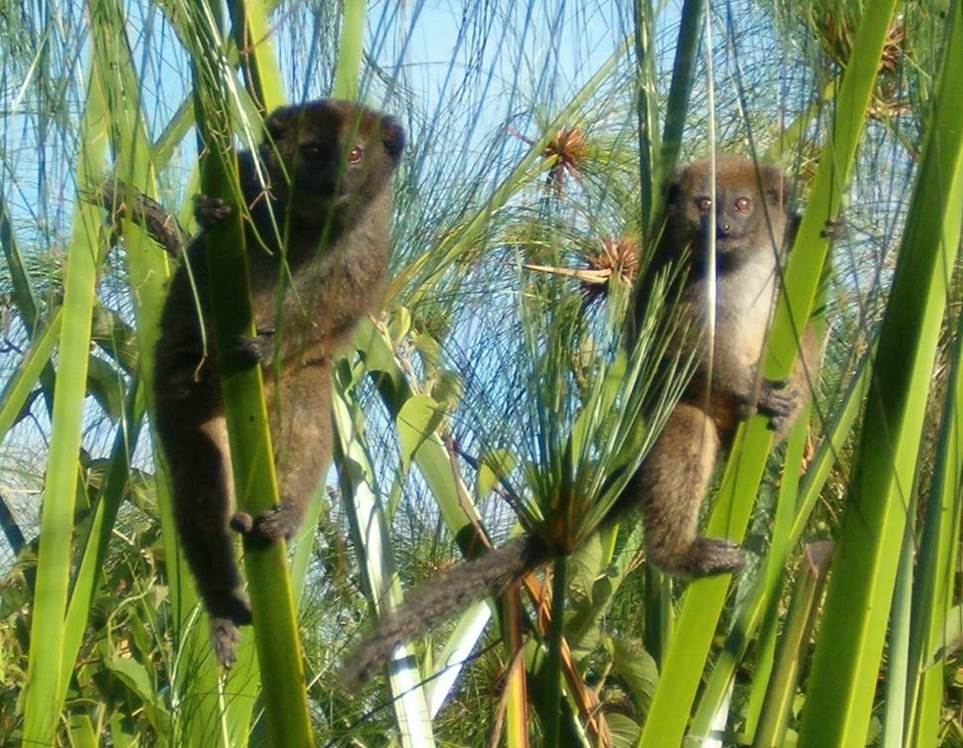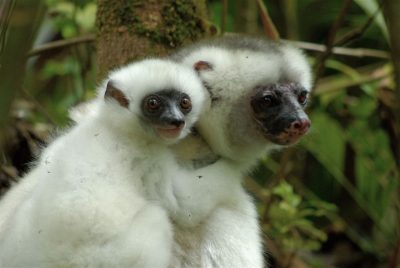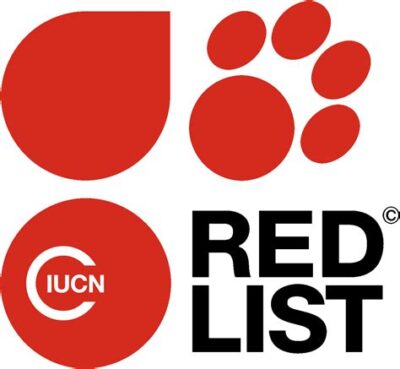Lemurs are the most endangered group of mammals. In fact, 98% of lemur species are threatened with extinction, and 31% of species are critically endangered! But, how do we know? And what does “endangered” and “critically endangered” actually mean?
Read below to learn about the IUCN Red List, how it assesses the conservation status of species around the world, and what the Red List says about lemurs.
- What is the IUCN Red list?
- How many species are on the Red List and how are the species categorized?
- How frequently is the Red List updated?
- What does the 2020 Red List say about lemurs?
- How did lemurs’ conservation status change from the 2012 Red List update to the 2020 Red List update?
- What does it mean for a species to be critically endangered?
- What does the Red List status of lemurs mean for their survival in Madagascar?
IUCN 2021. The IUCN Red List of Threatened Species. Version 2021-1. https://www.iucnredlist.org. Downloaded on 1 April 2021.
What is the IUCN Red List?
In 1964, the International Union for the Conservation of Nature (IUCN) established the Red List of threatened species. The Red List details the conservation status of the world’s plant and animal species and provides assessments on the population status, habitat range, ecology, threats, and areas of future research focus for all listed species.
It is a powerful tool for conservationists, governments, scientists, zoos, and teachers, because it helps us assess the health of the world’s biodiversity, urge conservation action and policy change, and educate the conservation community as well as the general public.
How many species are on the Red List and how are the species categorized?
Currently over 120,000 species are listed on the Red List, including mammals, birds, fish, and corals. Each species is assigned one of nine categories reflecting their current conservation status in the wild: Not Evaluated, Data Deficient, Least Concern, Near Threatened, Vulnerable, Endangered, Critically Endangered, Extinct in the Wild, and Extinct.
Learn about the Red List Categories
How frequently is the Red List updated?
Species are assessed every several years in a series of meetings around the world with scientists and conservation experts who have expert knowledge of each species. The most recent assessment was completed in 2020, which followed a 2012 assessment.
What does the 2020 Red List update say about lemurs?

Sifaka (Propithecus verreauxi) in Nahampoana Reserve. This species is listed as critically endangered by the IUCN Red List. Photo: Domoina R.
Almost all lemur species are now listed on the Red List, other than a few recently recognized species such as the Jonah’s mouse lemur (Microcebus jonahi).
The 2020 Red List update highlights that 98% of all listed lemur species — 103 out of 107 listed — are now threatened with extinction and a further 33 species are listed as Critically Endangered, one listing away from extinction in the wild.
These updated assessments follow years of expeditions, surveys, and analysis by scientists across Madagascar. Two notable species — Verreaux’s sifaka and Madame Berthe’s Mouse Lemur — were previously considered Endangered. But now, they are among those newly listed as Critically Endangered. Both species have experienced serious declines due to loss of their forest habitat.
Only four of the assessed lemur species are not considered threatened with extinction, including three mouse lemurs and one dwarf lemur species. These are classified as either Data Deficient or Least Concern. The 2020 assessment also highlights the threats facing lemur species across Madagascar, including ongoing habitat loss and the pet lemur trade.
How did lemurs’ conservation status change from the 2012 Red List update to the 2020 Red List update?

Lac Alaotra Gentle Lemurs. Photo: Durrell Madagascar.
The 2012 Red List update found that 95% of all lemur species were threatened with extinction.
So, the 2020 update found that 3% more of all lemur species are now threatened.
Two of the most notable species whose conservation status increased to Critically Endangered in the 2012 update were the Lac Alaotra Gentle lemur (Hapalemur alaotrensis) and Perrier’s sifaka (Propithecus perrieri).
The 2020 update now lists 8 of 9 sifaka species as critically endangered. The Milne Edwards sifaka (Propithecus edwardsi) is listed as endangered.
What does it mean for a species to be critically endangered?
Red List assessments are complicated and difficult to explain. In simple terms, if a species is critically endangered, that means it is in real trouble. If we don’t solve the problems causing their decline very soon, it will be too late and the species is likely to go extinct in the wild.
There are four criteria that determine a species’ category on the Red List: population trend, geographic distribution, population size, and probability of extinction. Population trend and probability of extinction are measured in 10 years or 3 generations, whichever is longer.
Critically endangered species meet the following parameters for these four criteria.
- Population trend. Critically endangered species have seen an 80% or greater reduction in their population size during this time period, or over 90% reduction if the causes of the decrease are reversible, understood, and are no longer occurring.
- Geographic distribution. Critically endangered species have small geographic ranges of 100 or less square kilometers.
- Population size. To be classified as critically endangered, there are 250 or less mature adults of that species living in the wild. They measure mature adults because it is important to know how many of the remaining wild individuals can reproduce. For example, the Lac Alaotra Gentle lemur (Hapalemur alaotrensis) is considered critically endangered because there are less than 250 mature individuals. But, there are still 3,000 total individuals left in the wild!
- Probability of extinction. Scientists estimate that the probability of extinction for a critically endangered species will be greater than or equal to 50% over the next 10 years or 3 generations, whichever is longer.
View Summary Sheet of Criteria
What does the Red List status of lemurs mean for their survival in Madagascar?

Silky Sifaka mother and child. Photo: Jeffrey Gibbs.
With a staggering 98% of lemur species threatened with extinction, it is more important than ever for us all to work together to save lemurs from extinction.
How do we do that? Members of the Lemur Conservation Network are working with Malagasy people to discover and implement solutions for the threats lemurs face, including habitat loss, poaching, the pet trade, invasive species, and climate change. Supporting Malagasy people and empowering the local scientific and conservation community provides long term solutions that help Madagascar’s people and wildlife all thrive.
How You Can Help Lemurs






